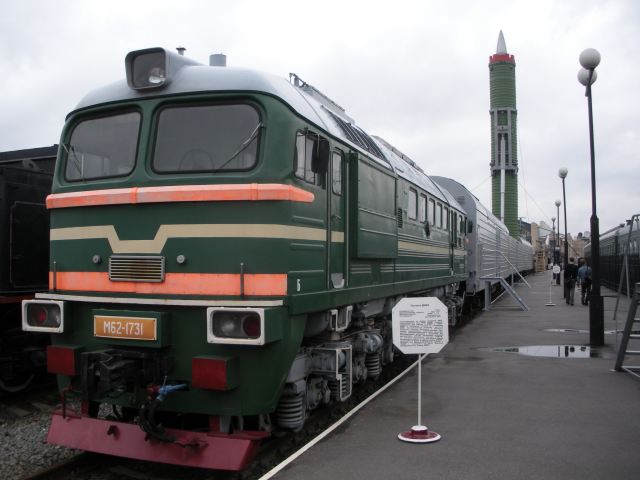Russia has developed new railway missile complex "Barguzin" able to tow up to six Yars missiles 2712
| a | |||
Military Defense Technology - Barguzin railway missile complex |
|||
| Saturday, December 27, 2014 10:09 AM | |||
| Russia has developed new railway missile complex "Barguzin" able to tow up to six Yars missiles. | |||
Last
week the head of Russia's Strategic Missile Force, Lieutenant General
Sergey Karakayev, revealed that the future missile platform would be called
Barguzin. Now a source in the Russian military, which preferred to remain
anonymous, has revealed some details of the weapon to Russian news agencies. |
|||
 In the 1970s, the Soviet Union developed a train to transport and deploy the RT-23 "Molodets" intercontinental ballistic missile, known to the West as the SS-24 "Scalpel." |
|||
| |
|||
A Russian military
source outlined the capabilities of Barguzin strategic missile train.
The country may roll out five such disguised mobile launch platforms
each carrying six RS-24
Yars missiles in five years. The RT-23 was a
Soviet ICBM (InterContinental Ballistic Missile) developed and produced
by the Yuzhnoye Design Bureau before 1991. It is cold-launched, and
comes in silo– and railway-car–based variants. It is a three-stage
missile that uses solid fuel and thrust vectoring for the first stage,
with 10 MIRV warheads, each with a 550–kt yield. |
|||
The destructive potential of the new platform would probably be smaller than that of its predecessor however. Molodets missiles had 10 MIRVed warheads with a total yield of 5.5 megatons. RS-24 Yars reportedly has four warheads with a total yield of between 0.4 and 1.2 megatons. The more advanced Yars, however, is more accurate and has greater range. Organizationally, each train with its personnel would constitute a single regiment of the Strategic Missile Force (RVSN). “The BZhRKs Barguzin will be delivered to one of the RVSN divisions organized into five regiments,” the source said. “The timeline for finishing the development is 2018.” The first Barguzin is likely to go into service in 2019, the source said. The Russian military expects the nuclear trains to remain in service until at least 2040. |
|||



























